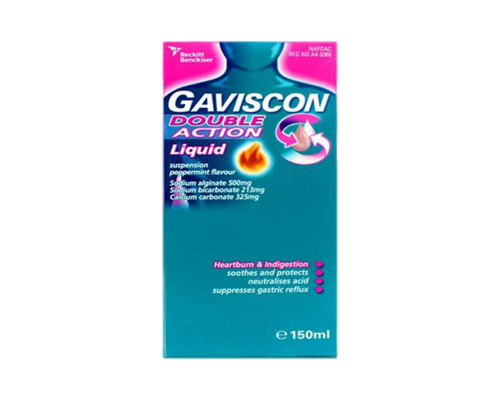Description
Trade name:
Heli-Cure
Compound:
Each tablet contains:
Omeprazole 20 mg
Clarithromycin 250 mg
Tinidazole 500 mg
Auxiliary components:
Mannitol, povidone, sodium croscarmellose, sodium lauryl sulfate, talc, magnesium stearate.
Properties:
Omeprazole inhibits the secretion of hydrochloric acid by specifically inhibiting H+K+-ATPase, an enzyme found in the membranes of parietal cells of the gastric mucosa. Reduces basal and stimulated secretion regardless of the nature of the irritant. After a single oral administration of the drug, the effect of omeprazole occurs within the first hour and lasts for 24 hours, the maximum effect is achieved after 2 hours. After stopping the drug, secretory activity is completely restored after 3-5 days.
Clarithromycin is a semi-synthetic antibiotic from the group of macrolides with a wide spectrum of action. It has an antimicrobial effect, which is associated with the suppression of protein synthesis by interacting with the 50S ribosomal subunit of the microbial cell. It is effective against a large number of gram-positive, gram-negative aerobic and anaerobic microorganisms, including Helicobacter pylori. The metabolite 14-hydroxyclarithromycin formed in the body also has pronounced antimicrobial activity.
Tinidazole inhibits synthesis and damages the structure of bacterial DNA. It has activity against anaerobic bacteria, protozoa and Helicobacter pylori.
Indications:
Eradication therapy of Helicobacter pylori in gastric ulcer and duodenal ulcer.
Method of administration and dosage:
The optimal dosage regimen is selected by the doctor after tests.
On average, the drug is taken 2 times a day, morning and evening, during meals. The average course of treatment is 2 weeks.
Contraindications:
– hypersensitivity to omeprazole, clarithromycin or tinidazole, as well as to macrolide antibiotics;
– combined use with cisapride, pimozide, astemizole, terfenadine, ethanol is prohibited;
-pregnancy;
– lactation period;
– organic diseases of the central nervous system;
-porphyria;
-suppression of bone marrow hematopoiesis;
– children under 18 years of age;
-renal and/or hepatic insufficiency.
Precautions:
Before starting therapy, it is necessary to exclude the presence of a malignant process, since treatment, masking the symptoms, can delay the correct diagnosis.
Prescribed with caution in combination with medications metabolized by the liver. In case of combined administration with warfarin or other indirect anticoagulants, prothrombin time should be monitored.
In case of a history of heart disease, concomitant use with terfenadine, cisapride, astemizole is not recommended.
Tinidazole causes dark urine.
Impact on the ability to drive vehicles and operate machinery:
During the treatment period, caution must be exercised when driving vehicles and engaging in other potentially dangerous activities that require increased concentration and quick psychomotor reactions.
Side effects:
From the digestive system: dysbacteriosis, diarrhea or constipation, nausea, vomiting, flatulence, abdominal pain, dry mouth, taste disturbance, metallic taste in the mouth, decreased appetite, stomatitis, transient increase in the activity of liver enzymes in plasma, liver dysfunction, hepatitis (including jaundice), in patients with previous liver disease – encephalopathy; rarely pseudomembranous enterocolitis.
From the central nervous system: headache, dizziness, agitation, increased fatigue, weakness, drowsiness, insomnia, ataxia, paresthesia, depression, confusion, hallucinations, epileptic reactions, peripheral neuropathy, convulsions, fear, nightmares, disorientation, psychosis, depersonalization, tinnitus.
From the musculoskeletal system: muscle weakness, myalgia, arthralgia.
From the hematopoietic system: leukopenia, neutropenia, thrombocytopenia, thrombocytopenic purpura, anemia.
From the skin: itching; rarely – skin rash; in some cases – photosensitivity, erythema multiforme exudative, alopecia.
Allergic reactions: urticaria, angioedema, bronchospasm and anaphylactic shock.
Others: tachycardia, interstitial nephritis, visual impairment, peripheral edema, increased sweating, fever, gynecomastia.
Storage method:
At a temperature not exceeding 30 degrees.









